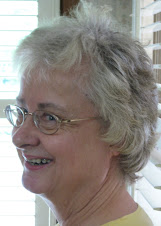The warp is on the loom for the handspun shawl sampling. For probably  the first time, I threaded the loom without any tools. Why? None of my tools satisfactorily grabbed onto this heaviesh yarn. Being right-handed, that was the first way I tried it. Didn’t work because everything seemed to get in the way. Working left-handed, however, did work quite nicely. I tend to be slightly ambidextrous. I cannot write well with my left hand, but I do use it for other tasks. Fingers, however, will not be my tool of choice for threading 60/2 silk!
the first time, I threaded the loom without any tools. Why? None of my tools satisfactorily grabbed onto this heaviesh yarn. Being right-handed, that was the first way I tried it. Didn’t work because everything seemed to get in the way. Working left-handed, however, did work quite nicely. I tend to be slightly ambidextrous. I cannot write well with my left hand, but I do use it for other tasks. Fingers, however, will not be my tool of choice for threading 60/2 silk!
The photo shows that I have made a start. But I am not happy. Not at all.
First, the warp consists of two panels of blue on the outside and a slightly larger panel of light gray on the inside. When I weave with blue weft, the gray warp in the center is barely visible. When i weave with the gray weft, the blue warps are barely visible.
What is more, the feel of the fabric is just awful: thick and rough. Coarse. I immediately thought about trying a new threading—something like huck lace or Bronson lace. Then I remembered my tendency to beat wool to death. And the way the colors have occurred in the weaving, I am clearly beating a weft-dominant fabric. I don’t want a weft-dominant fabric.
It is so very hard for me to beat wool softly, loosely, so that it truly looks like window screening while it is on the loom. So that, in short, it looks like something the cat dragged in and I’d just as soon she get out promptly. Beating like that just always seems counter-intuitive to me.
When I am weaving plain weave or twill with wool it is easy to check the beat. I can measure or, in the case of twill, I can check the angle. When I weave with wool, I have to do this almost constantly. Perhaps this is a reflection of how little I weave with wool.
But this is canvas weave. Here is the threading.

In this case, the weaving does not provide me with an easy visual guide. At least not at the moment. So I have woven a few rows of bright red (visible at the top of the photo) to separate this off from the next sampling where I WILL weave window screening. Then I plan to remove this weaving from the loom, separate the two and wash them, full them, whatever, to see if they soften, bloom, to see if I really want to use this structure after all.
Meanwhile, a vigorous walk in the welcome (relatively) cold weather that has finally returned to South Carolina, is definitely in order. Sometimes, but only sometimes, I do long for the snow and freezing temperatures of Wisconsin………..
Related Post: Next Project: Handspun Shawl
"Discouraged But Not Totally" was written by Margaret Carpenter for Talking about Weaving and was originally posted on January 09, 2009. © 2009 Margaret Carpenter aka Peg in South Carolina






 The samples in this third photo do have some promise. The bottom group of samples consists of a number of rows of pseudo plain weave followed by a double overshot. This group drapes nicely, is the right weight, but I don’t like them. Mostly I don’t like the way the colors interact.
The samples in this third photo do have some promise. The bottom group of samples consists of a number of rows of pseudo plain weave followed by a double overshot. This group drapes nicely, is the right weight, but I don’t like them. Mostly I don’t like the way the colors interact.













